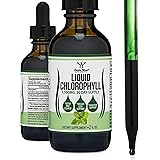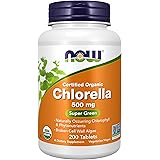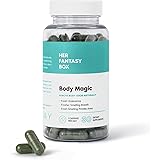The intricate dance of our body’s hormones often dictates more than we consciously realize, profoundly influencing our weight, mood, and overall vitality. At the heart of this physiological orchestration lies cortisol, a formidable stress hormone, whose chronic elevation has been extensively linked to a spectrum of adverse health conditions. As illuminated in the accompanying video, understanding how to naturally reduce cortisol levels is not merely about managing a single hormone; it’s about initiating a holistic shift towards a balanced lifestyle that fosters true health and resilience.
Chronic stress, often a deeply ingrained lifestyle pattern, triggers a cascade of responses designed for acute survival but detrimental in the long term. This comprehensive guide expands upon the video’s insights, delving deeper into the mechanisms of stress, its multifaceted impact, and actionable, evidence-based strategies to naturally recalibrate your body’s stress response, promoting sustainable weight loss and profound stress relief.
Understanding the Stress Response and Cortisol’s Role
At its core, stress is the body’s physiological reaction to perceived threats, mediated primarily by the autonomic nervous system. This involuntary system comprises two main branches: the sympathetic nervous system, responsible for the “fight or flight” response, and the parasympathetic nervous system, which governs “rest and digest” functions. When activated, the sympathetic system marshals resources, increasing heart rate, blood pressure, and crucially, elevating blood sugar through hormones like cortisol, preparing the body for immediate action. Concurrently, non-essential functions like digestion, immune response, and healing are temporarily suppressed.
The evolutionary design of this system is for short, intense bursts of activity, followed by periods of parasympathetic dominance for recovery. However, in modern life, stress is often chronic, stemming from financial pressures, work overwhelm, or imagined threats, rather than acute physical dangers. This constant low-grade sympathetic activation leads to a state of “sympathetic dominance,” where the body is perpetually primed for emergency. The video aptly illustrates this imbalance, suggesting we are designed for perhaps 10-20% burst sympathetic activity and 80-90% parasympathetic, but our modern lives often invert this ratio. This chronic sympathetic overactivity can lead to persistent high cortisol, muscle tension, elevated LDL cholesterol (a component of wound clotting), and contributes to conditions such as insulin resistance, weight gain, Type 2 diabetes, and even muscle wasting in extreme cases like Cushing’s disease.
The Tripartite Nature of Stress: Chemical, Structural, and Emotional
Stress isn’t solely emotional; it manifests across three interconnected domains—chemical, structural, and emotional—forming a ‘stress triangle’ where each leg is equally vital. Chemical stressors encompass anything from infections and low-grade toxicity to dysglycemia, or unstable blood sugar. When blood glucose levels dip, the body releases cortisol to compensate, creating a metabolic stressor. Structural stress can arise from sedentary lifestyles, past physical traumas like slips or car accidents, or even spinal stiffness (subluxation). Finally, emotional stress, the most commonly recognized form, includes feelings of fear, anger, overwhelm, or grief. True stress management necessitates addressing all three facets concurrently to restore systemic balance.
The Brain’s Orchestration of Cortisol Management
Crucially, the brain, specifically the frontal lobe, plays a pivotal role in modulating the stress response. While stress responses are inherently life-saving, the frontal lobe possesses the inhibitory capacity to determine when to deactivate them. A well-functioning frontal lobe allows for appropriate stress responses that can then be turned off, leading to effective stress tolerance. Conversely, compromised frontal lobe activity can result in prolonged, unopposed stress responses, explaining why individuals react to stressors with varying degrees of calmness or panic.
The frontal lobe’s ability to inhibit the sympathetic nervous system indirectly enables the parasympathetic system to engage. By “turning off the sympathetic,” the frontal lobe effectively “turns on” digestion, immune function, reproduction, and healing—vital processes that are suppressed during a stress response. Recognizing this fundamental wiring empowers individuals to strategically manage stress by consciously engaging practices that stimulate frontal lobe activity and interrupt established stress patterns.
Holistic Strategies to Naturally Reduce Cortisol
Effective cortisol reduction requires a multi-pronged approach, focusing on pattern interruption, brain stimulation, targeted nutrition, and lifestyle modifications that positively influence hormones and neurotransmitters. The following strategies, building upon the insights from the video, offer pathways to re-establish physiological balance:
1. Aerobic Exercise: Movement as a Pattern Interrupt and Brain Stimulant
Engaging in moderate aerobic activity is a powerful pattern interrupt, physically moving you away from stressors. Beyond this, movement is a primary driver of brain stimulation; an astonishing 90% of sensory input to the brain originates from movement. Increased oxygenation during exercise further nourishes brain function. Furthermore, aerobic exercise enhances insulin sensitivity in muscles, contributing to stable blood sugar and subsequently reducing the body’s reliance on cortisol for glucose regulation.
2. High-Intensity Interval Training (HIIT): Strategic Cortisol for Growth Hormone Surge
While seemingly counterintuitive due to its immediate stress on the body, short bursts of HIIT (e.g., 15-second intervals to exhaustion) can be highly effective. The key lies in its brevity. While HIIT temporarily elevates cortisol, it dramatically boosts growth hormone production by 300-400%. Growth hormone is antagonistic to cortisol, effectively countering its prolonged effects and promoting recovery. However, individuals with significant adrenal fatigue or compromised health should approach HIIT cautiously, as it can be overly taxing on an already depleted system.
3. Prioritizing Recovery: The Yin to Exercise’s Yang
Exercise is beneficial, but its therapeutic effects are maximized when balanced with adequate recovery. The contrast between intense activity and deep rest is crucial for healing and adaptation. Over-exercising without sufficient recovery can perpetuate a state of sympathetic dominance, leading to increased cortisol and hindering overall progress. Listening to your body and avoiding fatigue is paramount.
4. Yoga: Mindful Movement and Brain Stimulation
Yoga serves as an excellent pattern interrupt, shifting focus from stressors to bodily sensations and breath. Its various poses and stretches provide novel brain stimulation. However, the benefits for cortisol reduction are best realized in traditional, slower forms of yoga that prioritize mindfulness and gentle movement, rather than fast-paced, intense variations that might inadvertently increase sympathetic activation.
5. Breathing Exercises: Direct Autonomic Nervous System Modulation
The breath offers a direct conduit to influence the autonomic nervous system. Inhalation is primarily sympathetic, while exhalation stimulates the parasympathetic system. Practicing slow, prolonged exhalations—aiming for an out-breath of at least 5 seconds—consciously engages the parasympathetic nervous system, training the body to favor a state of rest and calm.
6. Meditation: Cultivating Inner Peace and Frontal Lobe Activation
Meditation, often coupled with breathing techniques, is a profound pattern interrupt and brain stimulant. By shifting focus and observing thoughts without judgment, meditation enhances frontal lobe activity, improving its inhibitory control over stress responses. Regular practice fosters deeper states of peace, which can actively help to undo the cumulative effects of past stresses.
7. Mindfulness: A Lifestyle of Presence and Positive Outlook
Mindfulness extends beyond formal meditation; it’s a practice of sustained, non-judgmental awareness throughout the day. By consciously checking in with one’s feelings and perspectives, and intentionally seeking the “bright side,” mindfulness cultivates a lifestyle that counteracts stress. It becomes an automatic pattern interrupt, constantly recalibrating the internal state towards appreciation and well-being.
8. Celebrate: Acknowledging Success to Build Momentum
The act of celebrating small wins or positive occurrences, rather than quickly dismissing them, is a potent pattern interrupt. Taking a moment to appreciate success, to “milk” the good feeling, reinforces positive neural pathways, builds momentum, and shifts the brain out of a stress-oriented state.
9. Appreciate: The Antidote to Stress
Cultivating gratitude and appreciation is one of the most powerful strategies for stress reduction. It is physiologically impossible to feel genuine appreciation and be stressed simultaneously. Regularly reflecting on the positive aspects of life—the beauty of nature, personal blessings—activates neural circuits associated with well-being, directly counteracting sympathetic overdrive.
10. Read or Listen to Uplifting Content: External Pattern Interrupts
Engaging with uplifting or educational content for 10-30 minutes daily serves as a powerful pattern interrupt. It introduces new perspectives and positive narratives into the mind, helping to build a positive outlook and shift away from negative thought loops that perpetuate stress. This external input can effectively “re-program” the brain’s internal dialogue.
11. Positive Social Connections: Curating Your Emotional Environment
The people we surround ourselves with profoundly impact our stress levels. Actively seeking out individuals and groups that uplift and energize, while respectfully distancing from those who drain or induce negative emotions, is crucial. Positive social interaction fosters a sense of belonging and well-being, acting as a natural buffer against stress.
12. Essential Oils and Sensory Interrupts: A Primal Connection
The sense of smell, the most primitive of human senses, has a direct and potent impact on the brain. Essential oils, or any pleasant scent, can serve as a rapid pattern interrupt and brain stimulant. By focusing on a particular aroma, the brain’s attention is diverted, providing a brief but effective “timeout” from stressors. Beyond essential oils, flower essences or homeopathics also offer subtle, calming sensory inputs.
13. Adaptogenic Herbs: Natural Stress Modulators
Adaptogenic herbs such as Ashwagandha, Ginseng, and Kava have been traditionally used to help the body “adapt” to stress. These herbs possess properties that can safely modulate the body’s stress response, promoting a sense of calm and resilience without sedation. They support the adrenal glands in maintaining a balanced hormonal output, including cortisol.
14. Smile and Laugh: Physiological Mood Shifters
The simple act of smiling, even if forced, or allowing oneself to laugh, can create an immediate physiological shift. These actions trigger the release of endorphins and other feel-good neurotransmitters, serving as a powerful pattern interrupt that can instantly change emotional state. Regular practice can build positive emotional momentum and long-lasting effects.
15. Prioritize Sleep: The Foundation of Hormonal Balance
Adequate and regular sleep is fundamental for hormonal regulation and recovery. Deep sleep, particularly the hours before midnight, significantly boosts growth hormone production. Since growth hormone counteracts cortisol, optimizing sleep quantity and quality directly contributes to lower cortisol levels and improved stress resilience. Regularity in sleep schedules further supports the body’s natural circadian rhythms.
16. Intermittent Fasting: Metabolic Regulation and Growth Hormone Elevation
Strategically structured eating patterns, such as intermittent fasting (e.g., transitioning from three meals to two meals daily), can increase growth hormone levels. However, for optimal benefits and to avoid compensatory cortisol spikes, stable blood glucose is crucial. The body releases cortisol when blood sugar dips too low; thus, being “fat adapted” and maintaining stable blood sugar throughout fasting periods is paramount.
17. Stable Blood Glucose: Minimizing Metabolic Stress
Unstable blood sugar, characterized by frequent highs and lows, is a significant metabolic stressor. Each dip in blood glucose prompts the release of cortisol to raise blood sugar, perpetuating a stress cycle. A diet rich in whole foods, fiber, and healthy fats, with minimal refined carbohydrates, helps maintain stable blood glucose, thereby reducing cortisol output and supporting adrenal health.
18. Nutritional Support for Adrenal Health: Fueling the Stress Response Organs
The adrenal glands, the primary responders to stress signals from the brain, require specific nutrients for optimal function. Chronic stress can deplete these vital nutrients, compromising adrenal health. Key nutritional components include:
- Vitamin D3: Essential for a multitude of bodily functions, including immune health and hormonal balance.
- B Vitamins (especially B1 and B5): Crucial cofactors for energy production and neurotransmitter synthesis. Sourcing these from natural foods or nutritional yeast is preferable to synthetic forms.
- Minerals (Magnesium, Potassium, Calcium): These electrolytes are vital for nerve impulse transmission and muscle function. Magnesium, in particular, is renowned for its calming effect on the nervous system, assisting in regulating neural membranes.
- DHA (Docosahexaenoic Acid): A critical omega-3 fatty acid found in fish oil, DHA is essential for brain structure and function. It exhibits a calming, anti-stress effect, supporting cognitive health and emotional regulation.
19. Adrenal Reflex Points: A Direct Somatic Intervention
Based on applied kinesiology principles identified in the 1960s, specific adrenal reflex points exist on the abdomen. Located approximately 1 inch to the side and 1-2 inches above the belly button, gently rubbing and then holding these points for 10-30 seconds can stimulate a palpable pulse. This direct somatic intervention is believed to help calm the adrenal glands, offering an immediate self-care strategy for stress relief.
20. Embrace Pets and Hobbies: Joyful Pattern Interrupts
Spending time with pets offers a profoundly calming and pattern-interrupting effect, fostering a positive shift in hormonal balance. Similarly, engaging in hobbies—be it exercise, joining a chess club, or singing in a choir—provides joy, mental engagement, and an escape from daily stressors. Any activity that brings genuine fun and allows for focused engagement acts as a powerful antidote to chronic stress, reducing cortisol levels and enhancing overall well-being.
The journey to naturally reduce cortisol is a holistic one, acknowledging that no single strategy works in isolation. By understanding the interconnectedness of our physiological systems and committing to comprehensive lifestyle adjustments, we can move beyond simply managing symptoms. Instead, we empower our bodies to restore balance, dismantle chronic stress, and cultivate a foundation for enduring health and vitality.











